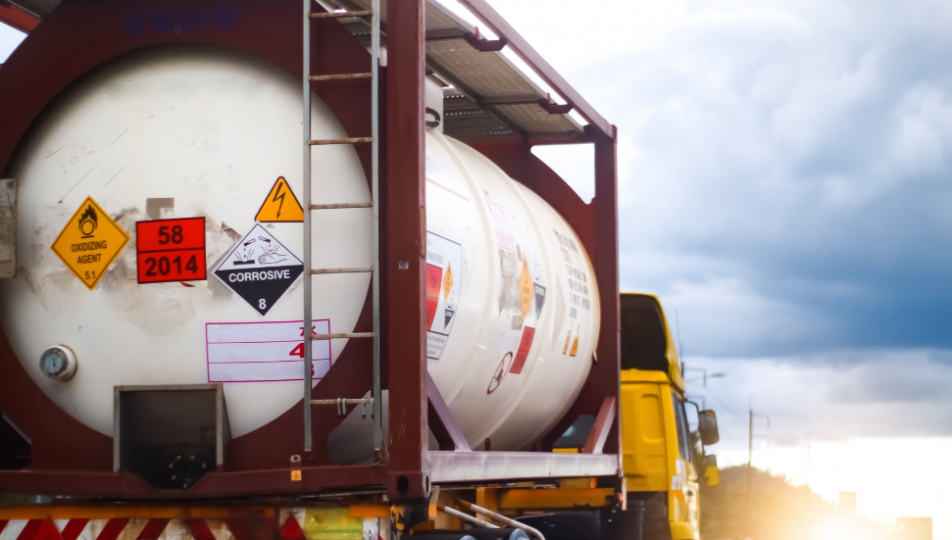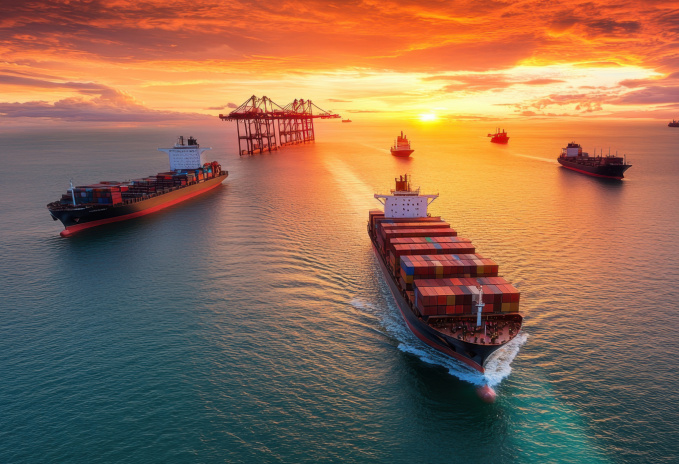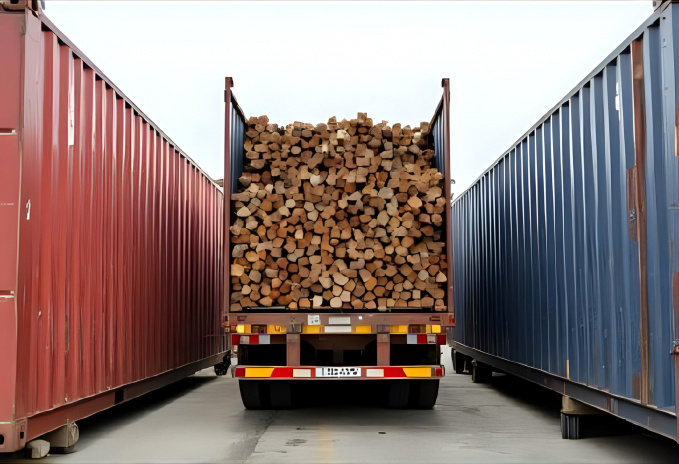Undeclared or misdeclared dangerous goods - Trojan horse on board ships

Transporting dangerous goods is always a relatively risky business. This risk can always be reduced by creating the right transport conditions for the type of cargo. It is also clear that if the right conditions are not created, dangerous goods can become a ticking time bomb. This is precisely the case with so-called Mis-declared cargoes.
Transporting dangerous goods is always a relatively risky business. This risk can always be reduced by creating the right transport conditions for the type of cargo. It is also clear that if the right conditions are not created, dangerous goods can become a ticking time bomb. This is precisely the case with so-called Mis-declared cargoes.
Fraud in the declaration of goods has been a headache for shippers and carriers for a long time. In the more distant past, the fraud involved the transport of goods on which high duties were imposed (tobacco, wine) or whose import was banned altogether. If such goods were taken on board, this did not pose a greater risk to the ship than a possible detention at the port of destination.
Today, however, the situation is different and much worse - smuggling of goods is still the order of the day, but undeclared dangerous goods are of greater concern to ship crews. Analysts estimate that up to 2 million containers of undeclared dangerous goods are transported annually. Some go even further and claim that up to 1/3 of all dangerous goods containers are incorrectly/fraudulently declared. This means that there are up to 600 containers with fraudulent certificates on a container ship carrying 18 000 containers. Yet it only takes one container on an entire ship to contain improperly transported dangerous cargo that, when ignited, sets off a chain reaction that can result in the loss of an entire ship and lives.
So, what leads shipping customers to misdeclare the contents of a container?
The main motive is the time and money saved and the relatively high chance of not finding out about the whole scam.
Dangerous goods must be properly packaged and transported under specific conditions, and some substances can only be transported in limited quantities - the cost of all this is waived if the goods are declared harmless. Another motive is the higher charges for the carriage of dangerous goods by shipowners and the limited capacity for DG containers on ships. Certain substances may be completely excluded from transport by some companies.
If the cargo is not declared as dangerous, no special precautions for its safe transport will be taken into account during loading. Thus, the container can be placed in the hold, near heat sources, or next to containers with incompatible cargo. At the same time, it will not be monitored by the crew for the duration of the journey and in the event of a cargo leak or spontaneous combustion, the crew will not be able to determine the correct and safe procedure for disposal, which may endanger the lives of all those involved in the recovery. Therefore, for the safety of the ship and crew alone, dangerous goods must be properly declared.
Among the most commonly intentionally undeclared substances is calcium hypochlorite, which undergoes very rapid decomposition at higher temperatures (as low as 30 degrees Celsius), releasing chlorine, combustion-promoting oxygen, and heat. Containers containing this substance must not be placed below deck or in direct sunlight and the container must be easily accessible to the crew - all of which is usually not met unless the cargo is properly declared. Relatively recent fires caused by this substance include those on the Hanjin Green Earth, APL Austria and Maersk Seoul. Also often undeclared are charcoal, which is highly flammable and explosive, especially in activated powder form, and lithium-ion batteries, which can short-circuit and start burning at temperatures as low as around 60 degrees Celsius.
So what are the most common tricks used to save money on transporting dangerous goods?
The most popular tactic is not to use the so-called Proper Shipping Name, the name under which the substance is officially transported and traded and under which it is registered in the IMDG Code. Substances are transported and registered under a variety of synonyms - for example, the aforementioned calcium hypochlorite is declared under the name Water Treatment or Bleaching Powder, charcoal is also "known" as Air Purifier and lithium batteries may appear in the B/L under the ambiguous name Mobile Accessories.
Outside of using synonyms, shippers often like to make last minute changes to bills of lading, where all of a sudden they put the correct product name in the Marks and Numbers section (thinking that it is then no longer fraud), relying on the changes not being detected by the library department (and not surprisingly, they often get away with it). Further, the fraudsters conceal the true manufacturer of the cargo - a chemist could certainly raise doubts about an innocent shipment. Fake companies are set up for this purpose - Brass Plate Companies. Also, the shipper can be fooled by certificates of safety of goods issued by an accredited laboratory, to which, however, they send as a sample a completely different substance.
So how can we combat misdeclared cargo? The simplest and most radical solution would be to open every container and check its contents (which is a rather inconceivable idea), or to abolish dangerous goods surcharges (apart from the fact that such an initiative would be very expensive for shippers, we are still stuck with substances that are excluded from transport and the extra costs of preparing dangerous goods for transport). The most sensible solution is therefore for shippers and freight forwarders to take a proactive approach to the problem.
Many registrars successfully use programs that are able to detect suspicious synonyms or non-existent producers. The fact that the senders do not bother to invent much is confirmed by the use of the same fake companies, where at most they can easily change the name or contact person.
It is also worth focusing attention on shipments with last-minute B/L adjustments.Another important net is the strict requirement to provide a full description of the cargo, including the proper shipping name, UN number and HS number (Harmonized Commodity Description and Coding System), which are used for customs identification purposes. The HS number in particular is often completely made up, so that undeclared dangerous goods can often be detected simply by checking this number.
It also pays to know your customer - if someone suddenly changes established routes and cargo types, that's at least a reason to do better screening. Better screening of new customers is an effective way to make sure it's not just some anonymous company based in Panama in a ground floor building with a thousand other similar companies.
A slightly controversial solution may be to change the pre-boarding cargo acceptance deadlines to give booking departments more time to check orders and avoid last minute bookings (some have suggested moving the deadlines only for customers for whom the screening has not yet been completed, but this move has generally not been well received by experts). Finally, there is better exchange of information between the shippers themselves to prevent goods accepted for carriage on a slot charter by one company from being carried by another company that has excluded them from carriage. The joint building of databases of detected fraudulently declared shipments is also useful.
Perhaps not surprisingly, most undeclared dangerous goods are shipped from China, so it's always a good idea to check out new Chinese companies to see if they are registered as an FTO (Foreign Trade Operator).
Fighting fraudsters is like fighting windmills, but it is important to remember that every single fraudulently declared container detected can prevent disaster and the loss of many lives.


